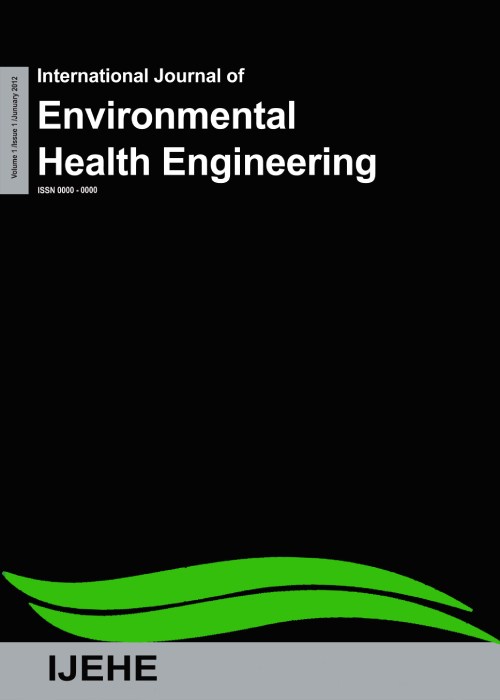فهرست مطالب
International Journal of Environmental Health Engineering
Volume:8 Issue: 1, Jul 2019
- تاریخ انتشار: 1398/04/10
- تعداد عناوین: 2
-
-
Page 1Aims
Organophosphates are well-known as an important group of poisons. The aim of the current study is to investigate acetylcholinesterase enzyme (ACHE) level in workers' blood of a poison-producing industry and its relationship with annual poison production and the use of personal protective equipment (PPE).
Materials and MethodsThis cross-sectional study was conducted during 2012–2015 on 84 workers from different units of a poisons-producing industry and a 20-person control group. The PPE used during the years of study includes Asphalt gloves, rubber gloves, and mask felt. The AChE level was detected based on the modified Ellman method.
ResultsThe maximum AChE level was observed in the control group. In addition, the minimum was found in the workers in 2015. The mean AChE level in the control group was significantly higher than that in the worker (P < 0.05). The mean AChE level in the workers based on the study years was significantly different, but this was not significant between the blood samples taken in the years of 2014 and 2015. Furthermore, it was found that both poisons-producing amount and PPE distribution were enhanced more during the past year of the study, while the poison amount entering to the body decreased.
ConclusionIt was deduced that the AChE level in workers' blood was lowered with increasing at the exposure years due to irreversible effects. It is also observed that growth at the PPE application acted as an important parameter to decline exposure to poisons and subsequently various health complications.
Keywords: Acetylcholinesterase enzyme, Diazinon, organophosphate poisons, propargite -
Page 2Aims
Nitrates in drinking water which may come from nitrogen fertilizers applied to crops are a potential health risk. The present study was conducted to investigate the application of alternating current (AC) in electrocoagulation (EC) process for nitrate removal from aqueous solution and linear and nonlinear isotherm modeling.
Materials and MethodsThe experiments were performed in pilot scale. The effective parameters including solution pH, the initial concentration of nitrate, total dissolved solids, contact time, and current density were studied.
ResultsThe obtained results showed that with increasing solution pH from 3 to 10, the sinusoidal removal efficiency was observed. With increasing current density from 0.5 to 2 A/cm2, the nitrate removal efficiency was ascended from 32% to 58%. The optimum electrolyte was 2 g/L of NaCl. With increasing contact time and decreasing initial nitrate concentration, the nitrate removal efficiency was enhanced. In addition, the adsorption NO3by AC EC was preferably fitted with Langmuir isotherm.
ConclusionThe results showed that the EC process could remove the nitrate to less than Iranian standard limit. The solution pH, current density, and contact time were showed the direct effect and initial concentration of nitrate depicted the reverse effect on nitrate removal efficiency
Keywords: Adsorption kinetics, alternating current, direct current, electrocoagulation, nitrate removal


